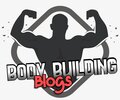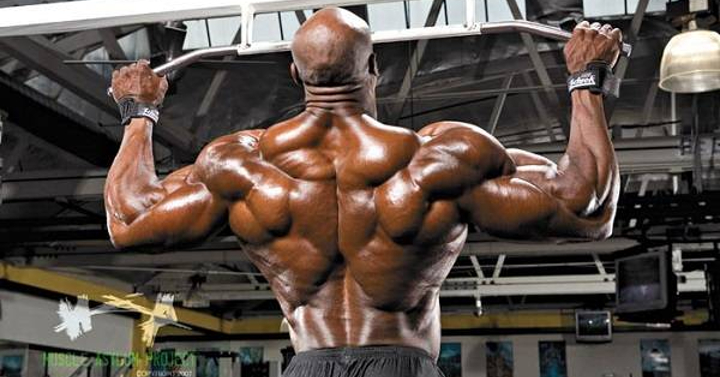Your back is one of the most crucial muscle groups for developing a strong, well-balanced, and healthy body. However, it’s also one of the areas that most people overlook when working out. The back makes up almost half of your upper body, but many gym-goers concentrate primarily on their arms, chest, or abs.
Improving posture, avoiding injuries, and developing functional strength that you can use in daily life are all goals of back training, not just getting a toned body. Your back muscles support you continuously whether you’re playing sports, lifting groceries, or working at a desk.
The good news? To build a strong, defined back, you don’t need to be a professional bodybuilder. Anyone can benefit from the proper exercises, regardless of experience level. This blog will discuss the best back exercises for people of all fitness levels and objectives.
Why Work Out Your Back?
Let’s first discuss the importance of back training before getting into the exercises:
- Enhances Posture: The forward hunch caused by prolonged sitting or computer use is offset by strong back muscles.
- Promotes the Health of the Spine: Lower back pain is less likely when your back is well-developed because it protects your spine.
- Develops Functional Strength: Back muscles are essential for daily tasks like carrying, lifting, and tugging.
- Aesthetic Appeal: The traditional V-taper style, which makes your waist appear smaller, is achieved with a broad, robust back.
- Improves Performance: Back strength increases pulling power and stability in weightlifting and sports.
The Back Muscles’ Anatomy
Knowing the essential muscles is helpful in understanding back training:
- The biggest muscles in the back, the latissimus dorsi, are in charge of pulling strength and width.
- The upper and mid-back muscles known as the trapezius (Traps) support shoulder movement and posture.
- The rhomboids, which are situated between your shoulder blades, are essential for scapular stability.
- The muscles that run along your spine, known as the erector spinae, are essential for good posture and strong lower back muscles.
- Although they are technically shoulder muscles, the rear delts are important for pulling and back definition.
All of these areas should be worked in a great back workout for both strength and appearance.
The Greatest Back Workouts for Almost Everyone
These exercises, which focus on your entire back, range from easy to difficult.
1. Chin-ups and Pull-ups
Worked muscles included the lats, traps, rhomboids, biceps, and core.
Why it works so well: It’s the best bodyweight exercise for increasing pulling strength and back width.
How to accomplish it:
- Hold a pull-up bar that is just a little bit wider than shoulder-width.
- Arms outstretched, hang.
- Raise yourself until your chin touches the bar.
- Slowly descend to the beginning position.
Advice:
- Start with band support or assisted pull-ups if you’re a beginner.
- Use chin-ups (palms facing you) as an alternative to highlight your biceps.
2. Deadlifts
Worked muscles included the erector spinae, traps, lats, glutes, hamstrings, and core.
Why it’s so good: Deadlifts are referred to as the “king of lifts” because they strengthen your entire posterior chain.
How to accomplish it:
- Place the barbell over your midfoot and stand with your feet hip-width apart.
- To grasp the bar, bend at the hips and knees.
- As you drive through heels to lift, keep your chest up and your back straight.
- Return to the ground with control.
Advice:
- Before introducing heavy weights, begin with perfect form and light weights.
- Avoid rounding your back as it increases the risk of injury.
3. Rows with Barbells
Worked muscles included the lats, rhomboids, traps, rear delts, and biceps.
Why it’s so good: A traditional mass builder that makes your back thicker.
How to accomplish it:
- Use an overhand grip to hold a barbell.
- To get your torso almost parallel to the floor, bend forward at the hips.
- Draw the barbell in the direction of your lower chest.
- Control it by lowering it.
Advice:
- Maintain a tight core and a neutral flashlight
- Concentrate on controlled pulls rather than jerking the bar.
4. Single-Arm Dumbbell Rows
Worked muscles included the biceps, rhomboids, lats, and traps.
Why it’s so good: Enhances muscle balance by isolating each side of your back.
How to accomplish it:
- For support, place your right hand and knee on a bench.
- With your left arm outstretched, grasp a dumbbell.
- Squeeze your back as you pull the dumbbell toward your torso.
- Slowly lower, repeat, then swap sides.
Advice:
- Keep your torso stable and avoid twisting it.
- Concentrate on pulling your shoulder blades back.
5. Pulldowns of the Lat
Worked muscles: biceps, traps, and lats
Why it’s great: A weight-adjustable, beginner-friendly substitute for pull-ups.
How to accomplish it:
- Hold the bar wider than shoulder-width while seated at a lat pulldown machine.
- Squeeze your lats and pull the bar to your upper chest.
- Return the bar to its initial position slowly.
Advice:
- Don’t lean too far back; maintain control.
- Pay attention to pulling with your back rather than your arms.
6. Cable Rows That Are Seated
Worked muscles included the biceps, rhomboids, lats, and traps.
Why it’s great: It enhances posture and adds thickness to the mid-back.
How to accomplish it:
- Place your feet against the platform while seated at a cable row machine.
- Using both hands, grasp the handle.
- Keep your elbows close to your body as you pull toward your torso.
- Return to the starting position by slowly extending your arms.
Advice:
- Sit tall and avoid rounding your lower back.
- After every repetition, squeeze your shoulder blades.
7. Pulling the Face
Worked muscles included the rotator cuff, rhomboids, traps, and rear delts.
Why it’s great: Excellent for developing the rear delts, shoulder health, and posture.
How to accomplish it:
- Place a rope attachment at chest height on a cable machine.
- With your elbows spread wide, grab the rope and draw it toward your face.
- Squeeze and pause, then control your return.
Advice:
- Move slowly and deliberately.
- Excellent as a warm-up and a way to end a workout.
8. Back Extensions, or Hyperextensions
Muscles used: hamstrings, glutes, and erector spinae
Why it’s great: It lowers the risk of injury by strengthening the lower back.
How to accomplish it:
- Take a seat on a bench with a back extension.
- Hold a plate or fold your arms across your chest.
- Lower your torso by bending at the hips.
- Raise yourself back up until your body is in alignment.
Advice:
- When your torso is straight, stop; don’t overextend.
- Prioritize controlled repetitions over speed.
9. Bodyweight Rows, or Inverted Rows
Worked muscles included the lats, traps, rear delts, biceps, and core.
Why it’s great: It’s a basic bodyweight exercise that’s perfect for novices and people without any equipment.
How to accomplish it:
- Use TRX straps or lie beneath a barbell that is placed in a squat rack.
- Hold onto the bar and maintain a plank-like posture.
- Squeeze your back muscles as you pull your chest toward the bar.
- lower under control.
Advice:
- If a full plank is too challenging, bend your knees.
- As you advance, raise your feet to make it more difficult.
Examples of Back Exercise Programs
Depending on your level of experience, you can follow these two example routines:
Basic Back Exercise
- Three sets of 10–12 repetitions for lat pulldowns
- Three sets of twelve repetitions per side for dumbbell rows
- Three sets of 10–12 repetitions for seated cable rows
- Face
Advanced Exercise for the Back
- Deadlifts: 4 sets of 6–8 repetitions
- Pull-ups: four sets until failure
- Barbell Rows: 4 sets of 8–10 repetitions
- Three sets of ten repetitions per side for dumbbell rows
- Face Pulls: 3 sets of 12–15 repetitions
- Three sets of fifteen repetitions of hyperextensions
Typical Errors in Back Training
- Using Too Much Weight: Lifting heavy weights without proper form lowers muscle activation and increases the risk of injury.
- Overuse of Arms: A lot of people let their biceps do all the work. Concentrate on using your back to pull.
- Ignoring the Lower Back: Remember to use back extensions or deadlifts to strengthen the erector spinae.
- Poor Range of Motion: Half-reps don’t work the muscles to their maximum potential.
- Ignoring Posture: To protect your spine, keep your chest high and your core strong.
Concluding Remarks
One of the most crucial muscle groups for posture, strength, and appearance is your back. The finest aspect? Building a stronger, more defined back doesn’t require you to be an expert. These exercises, which range from face pulls to cable rows, deadlifts to pull-ups, can be modified for almost anyone, regardless of fitness level.
Start with the fundamentals, concentrate on form, and as your strength increases, progressively increase the weights. In addition to making you appear more athletic, having a strong back will improve your mobility, well-being, and ability to live pain-free.
Don’t skip back day the next time you work out because it’s essential to having a strong, well-rounded body.


